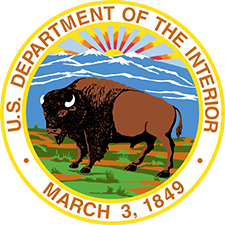Which Chapters are affected by the FBFA?
The nine chapters that are affected by the Former Bennett Freeze Area (FBFA) are Bodaway-Gap, Cameron, Coalmine Canyon, Coppermine, Kaibeto, Leupp, Tolani Lake, Tonalea, and Tuba City.
What is the Integrated Resource Management Plan?
In accordance with the American Indian Agricultural Resources Management Act (AIARMA), the Integrated Resource Management Plan (IRMP) is a strategic, vision-based, long-range management plan based on Navajo Nation members’ interests, needs, and concerns for their lands, and natural and cultural resources. This document was completed in May 2020. The purpose of the IRMP is to meet the social, cultural, economic, and long-term sustainability needs of the residents of the FBFA. The IRMP is a guide for decision-making by the Navajo Nation to manage existing Navajo Nation resources and to provide a framework for development in the future. The IRMP is a living document that is updated as conditions, community needs, or resource issues change, typically every 10-15 years.
What is the purpose of the Integrated Resource Management Plan?
The purpose of the IRMP is to provide a strategic management plan based on the Navajo Nation’s vision for its resources that will allow for integrated natural resource management within the FBFA. The IRMP identifies the resources available, specifies the goals and objectives of the Navajo Nation and BIA, and provides a foundation to guide the management of these resources. The IRMP creates a unified approach for managing the FBFA from a multi-resource benefit perspective by addressing opportunities for increased collaboration. In addition, as a foundational document, subsequent resource specific implementation plans such as an Agricultural Resource Management Plan would be consistent with the IRMP or conform to the IRMP, meaning that the Agricultural Resource Management Plan builds upon the goals, objectives, and management actions identified in the IRMP.
What are the benefits of the Integrated Resource Management Plan?
There are many benefits of implementing the Integrated Resource Management Plan (IRMP). Improved communication and collaboration will help to manage resources for the benefit of residents in the Former Bennett Freeze Area (FBFA). The IRMP is a guide for decision-making by the Navajo Nation to manage existing Navajo Nation resources and to provide a framework for development in the future. The IRMP planning process will result in a framework for managing the multitude of resources in the FBFA. The IRMP will protect and maintain values such as wildlife, fisheries, cultural resources, water quality, and minimize erosion.
What is a “Programmatic” Environmental Assessment?
There are two types of environmental assessments—“programmatic” and “project-level.” These are sometimes referred to as “planning-level” and “site-specific” based on differences in their focus and level of detail. A “Programmatic” EA evaluates the effect of a broad range of issues or planning-level decisions that may include a wide range of individual projects; implementation of projects over a long timeframe; and/or implementation of projects over a large geographic area, such as the FBFA. EAs that are not programmatic evaluate project specific actions.
The PEA does not evaluate project-level issues such as a specific development, project footprint, or design details— instead it examines the interaction among proposed projects or plans. After the PEA is final, it is followed by those project-level environmental reviews that can use the information in the PEA. The PEA provides information and analyses to the decision-maker necessary to make an informed decision.
Who Approves the IRMP and subsequent Programmatic Environmental Assessment?
The Navajo Nation Resources and Development Committee is the approval body for the IRMP. Following finalization of the draft IRMP, the BIA will prepare a Programmatic Environmental Assessment (PEA) to evaluate potential environmental impacts of implementing the proposed IRMP within the FBFA. The PEA will be prepared in accordance with the requirements of National Environmental Policy Act (NEPA), Council on Environmental Quality implementing regulations, Department of the Interior implementing regulations, and the Indian Affairs NEPA Guidebook.
The Final PEA will be issued with any revisions to the IRMP after public comment on the Draft PEA and the associated IRMP. The Navajo Nation Resource and Development Committee will select the preferred management alternative through Tribal resolution and recommend to the BIA Regional Director for approval and implementation of the IRMP. The BIA Regional Director will then issue a decision based on the Navajo Nation Resources and Development Committee recommendation, upon which the IRMP will be approved and adopted. In the event that the PEA concludes with a determination to proceed to preparation of an environmental impact statement (EIS) rather than a finding of no significant impact, the BIA will proceed with preparation of an EIS for the IRMP.
What happens after the IRMP and Programmatic Environmental Assessment are Approved?
Following approval of the IRMP and PEA, the Navajo Nation and BIA will prepare and implement appropriate management actions (i.e., additional NEPA actions, range management plans, conservation plans, annual work plans, etc.). Decisions on proposals for development within the FBFA would be streamlined by the framework provided in the IRMP and lower-level management plans and would protect resources that could potentially be impacted by the proposed project.


